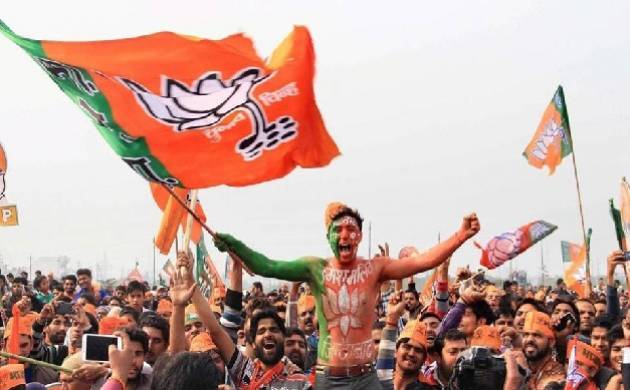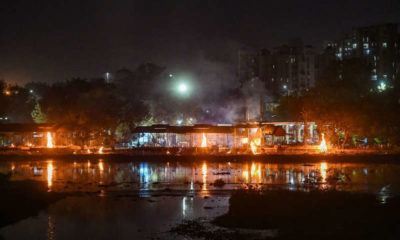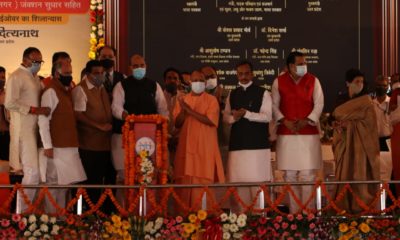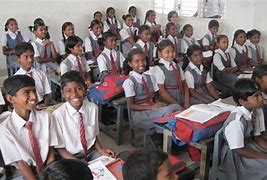Feature
BJP in Uttar Pradesh: The year the lotus started to wilt

The lotus was in full bloom in 2017 as the Bharatiya Janata Party (BJP) emerged out of its 14-year political exile and stormed to power in India’s most populous and politically crucial state of Uttar Pradesh.
A year-and-a-half later, in 2018, the lotus has begun to wilt as evident from several developments over the year.
On the one hand, there is tremendous resentment in the party cadres, who slogged to keep the party flag flying for 14-years under successive and very hostile Samajwadi Party (SP) and Bahujan Samaj Party (BSP) governments. On the other, the very people who voted it to power are seemingly feeling betrayed as the BJP government under monk-turned-politician Yogi Adityanath is engaged in acts that are not only unwarranted but also least people-oriented.
A spree of police shoot-outs in the beginning of the BJP regime had sent chills down the spines of criminals across the state. The government strongly defended its police on the issue as human right watch dogs called them staged killings, specially in western Uttar Pradesh. Many people openly patted the BJP government for their action against criminals and the mafias, but in 2018 the picture changed.

There was the shock killing of a dreaded mafia don, Munna Bajrangi, inside a high-security prison, the shooting down of an Apple executive going back home from a product launch party by trigger-happy cops in the heart of the state and a ruling party legislator thrown into jail for the gang-rape of a minor girl — who then conspiring with his brother and henchmen to kill victim’s father.
The father had been crying out for justice by knocking on the doors of the police. His killing sent shockwaves across the state as many, even BJP supporters, felt that the “jungleraaj” the party inherited had not gone. The inept handling of the situation by the police and the state government worsened the crisis until the media launched a campaign and the judiciary was forced to sit up and take notice.
“I am terribly upset and disturbed by these incidents. I feel betrayed because we voted for the BJP so that the criminals are hounded out and peace returns to the state and its people feel secure” said Preeti Nigam, a teacher, adding that incidents of mob lynching and cow vigilantism have picked up in the past one year.
The last nail seems to be the killing of police Inspector Subodh Kumar Singh in Bulandshahr earlier this month, apparently at the hands of right-wing affiliate group cadres of the ruling establishment. Instead of the Chief Minister condemning the killing and asking the police to crack down on such fringe elements, who now threaten to disrupt the mainstream, he chose to maintain a stony silence.
The disconnect with the people and disenchantment of its voters can be clearly seen as the BJP lost the Gorakhpur, Phulpur and Kairana parliamentary by polls. Phulpur was held by incumbent Deputy Chief Minister Keshav Prasad Maurya while Gorakhpur had elected Adityanath as its MP for five straight terms.

The coming together of the Bahujan Samaj Party (BSP) and Samajwadi Party (SP) has changed the electoral equations in the state and political pundits feel that if this arrangement continues till the 2019 Lok Sabha polls, the BJP might be in for a major shocker in terms of its numbers. At present, with ally Apna Dal, it has 73 of the state’s 80 Lok Sabha seats.
On Monday, Om Prakash Rajbhar, a leader of an alliance partner who is a cabinet minister, predicted “decimation” of the BJP in the 2019 Lok Sabha polls if the proposed SP-BSP alliance goes through.
Adityanath’s utterances, behaviour and choice of words have shocked even his own party members. On the floor of the state assembly, the saffron-robed chief minister called the SP a “party of terrorists”, threatened them with violence.
He then, calling Lord Hanuman, the monkey God, a Dalit infuriating Hindus in large numbers. It is being felt that a large cross-section of the Hindu community prefers the Congress’s new-found ‘soft-Hindutva’ than the hardcore being served to them by the BJP. To top it all, the Ram Mandir followers are also disgruntled.
The state’s fledgling bureaucracy, after initial days of control, seems to have returned to to its uncontrolled ways. There are many instances when ministers and allies have openly charged babudom of not paying heed to them. Insiders in the government admit that “things are not too rosy now”. The outings of Adityanath to Gorakhnath Peeth and his many meetings with seers and saints, some feel, has “made him look casual towards governance and in continuity with his Hindutva image”.
While some good things — creation of the One District one Product (ODOP) campaign, farm loan waiver, electrification of the villages, investors meet — too have happened, they have had little impact on the ground.
With just a few months to go for the general elections, many find the ruling BJP on shaky ground while some are hopeful that Prime Minister Narendra Modi’s appeal would see them through this time too, albeit with a lower margin.
Entertainment
Meghalaya Reserves Legalized Gambling and Sports Betting for Tourists

The State Scores Extra High on Gaming-Friendly Industry Index
Meghalaya scored 92.85 out of 100 possible points in a Gaming Industry Index and proved to be India’s most gaming-friendly state following its recent profound legislation changes over the field allowing land-based and online gaming, including games of chance, under a licensing regime.
The index by the UK India Business Council (UKIBC) uses a scale of 0 to 100 to measure the level of legalisation on gambling and betting achieved by a state based on the scores over a set of seven different games – lottery, horse racing, betting on sports, poker, rummy, casino and fantasy sports
Starting from February last year, Meghalaya became the third state in India’s northeast to legalise gambling and betting after Sikkim and Nagaland. After consultations with the UKIBC, the state proceeded with the adoption of the Meghalaya Regulation of Gaming Act, 2021 and the nullification of the Meghalaya Prevention of Gambling Act, 1970. Subsequently in December, the Meghalaya Regulation of Gaming Rules, 2021 were notified and came into force.
All for the Tourists
The move to legalise and license various forms of offline and online betting and gambling in Meghalaya is aimed at boosting tourism and creating jobs, and altogether raising taxation revenues for the northeastern state. At the same time, the opportunities to bet and gamble legally will be reserved only for tourists and visitors.
“We came out with a Gaming Act and subsequently framed the Regulation of Gaming Rules, 2021. The government will accordingly issue licenses to operate games of skill and chance, both online and offline,” said James P. K. Sangma, Meghalaya State Law and Taxation Minister speaking in the capital city of Shillong. “But the legalized gambling and gaming will only be for tourists and not residents of Meghalaya,” he continued.
To be allowed to play, tourists and people visiting the state for work or business purposes will have to prove their non-resident status by presenting appropriate documents, in a process similar to a bank KYC (Know Your Customer) procedure.
Meghalaya Reaches Out to a Vast Market
With 140 millions of people in India estimated to bet regularly on sports, and a total of 370 million desi bettors around prominent sporting events, as per data from one of the latest reports by Esse N Videri, Meghalaya is set to reach out and take a piece of a vast market.
Estimates on the financial value of India’s sports betting market, combined across all types of offline channels and online sports and cricket predictions and betting platforms, speak about amounts between $130 and $150 billion (roughly between ₹9.7 and ₹11.5 lakh crore).
Andhra Pradesh, Telangana and Delhi are shown to deliver the highest number of bettors and Meghalaya can count on substantial tourists flow from their betting circles. The sports betting communities of Karnataka, Maharashtra, Uttar Pradesh and Haryana are also not to be underestimated.
Among the sports, cricket is most popular, registering 68 percent of the total bet count analyzed by Esse N Videri. Football takes second position with 11 percent of the bets, followed by betting on FIFA at 7 percent and on eCricket at 5 percent. The last position in the Top 5 of popular sports for betting in India is taken by tennis with 3 percent of the bet count.
Local Citizens will Still have Their Teer Betting
Meghalaya residents will still be permitted to participate in teer betting over arrow-shooting results. Teer is a traditional method of gambling, somewhat similar to a lottery draw, and held under the rules of the Meghalaya Regulation of the Game of Arrow Shooting and the Sale of Teer Tickets Act, 2018.
Teer includes bettors wagering on the number of arrows that reach the target which is placed about 50 meters away from a team of 20 archers positioned in a semicircle.
The archers shoot volleys of arrows at the target for ten minutes, and players place their bets choosing a number between 0 and 99 trying to guess the last two digits of the number of arrows that successfully pierce the target.
If, for example, the number of hits is 256, anyone who has bet on 56 wins an amount eight times bigger than their wager.























